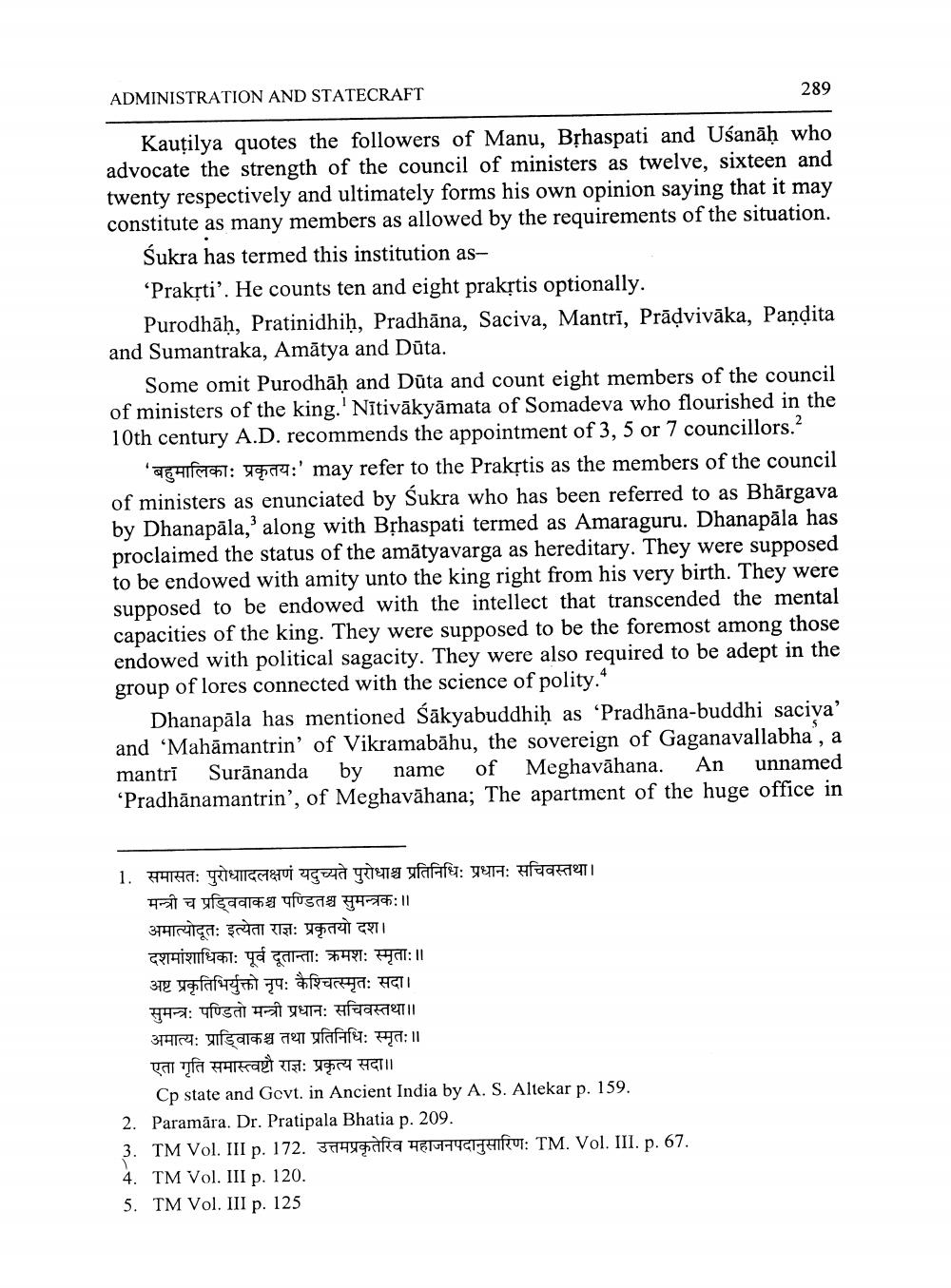________________
ADMINISTRATION AND STATECRAFT
289
Kautilya quotes the followers of Manu, Bșhaspati and Uśanāḥ who advocate the strength of the council of ministers as twelve, sixteen and twenty respectively and ultimately forms his own opinion saying that it may constitute as many members as allowed by the requirements of the situation.
Sukra has termed this institution as‘Prakrti'. He counts ten and eight prakstis optionally.
Purodhāḥ, Pratinidhiḥ, Pradhāna, Saciva, Mantrī, Prāļvivāka, Pandita and Sumantraka, Amātya and Dūta.
Some omit Purodhāh and Dūta and count eight members of the council of ministers of the king. Nītivākyāmata of Somadeva who flourished in the 10th century A.D. recommends the appointment of 3, 5 or 7 councillors.?
H oh: geoca:' may refer to the Prakstis as the members of the council of ministers as enunciated by Sukra who has been referred to as Bhārgava by Dhanapāla, along with BỊhaspati termed as Amaraguru. Dhanapāla has proclaimed the status of the amātyavarga as hereditary. They were supposed to be endowed with amity unto the king right from his very birth. They were supposed to be endowed with the intellect that transcended the mental capacities of the king. They were supposed to be the foremost among those endowed with political sagacity. They were also required to be adept in the group of lores connected with the science of polity.*
Dhanapāla has mentioned sākyabuddhiḥ as “Pradhāna-buddhi saciva' and 'Mahāmantrin' of Vikramabāhu, the sovereign of Gaganavallabha, a mantri Surānanda by name of Meghavāhana. An unnamed "Pradhānamantrin', of Meghavāhana; The apartment of the huge office in
1. समासतः पुरोधादलक्षणं यदुच्यते पुरोधाश्च प्रतिनिधिः प्रधान सचिवस्तथा।
मन्त्री च प्रड्विवाकश्च पण्डितश्च सुमन्त्रकः॥ अमात्योदूतः इत्येता राज्ञः प्रकृतयो दश। दशमांशाधिकाः पूर्व दूतान्ताः क्रमशः स्मृताः॥ अष्ट प्रकृतिभिर्युक्तो नृपः कैश्चित्स्मृतः सदा। सुमन्त्रः पण्डितो मन्त्री प्रधानः सचिवस्तथा।। अमात्यः प्राड्विाकश्च तथा प्रतिनिधिः स्मृतः॥ एता गृति समास्त्वष्टौ राज्ञः प्रकृत्य सदा।।
Cp state and Govt. in Ancient India by A. S. Altekar p. 159. 2. Paramāra. Dr. Pratipala Bhatia p. 209. 3. TM Vol. III p. 172. 37744a HEIGHTHIRUT: TM. Vol. III. p. 67. 4. TM Vol. III p. 120. 5. TM Vol. III p. 125




